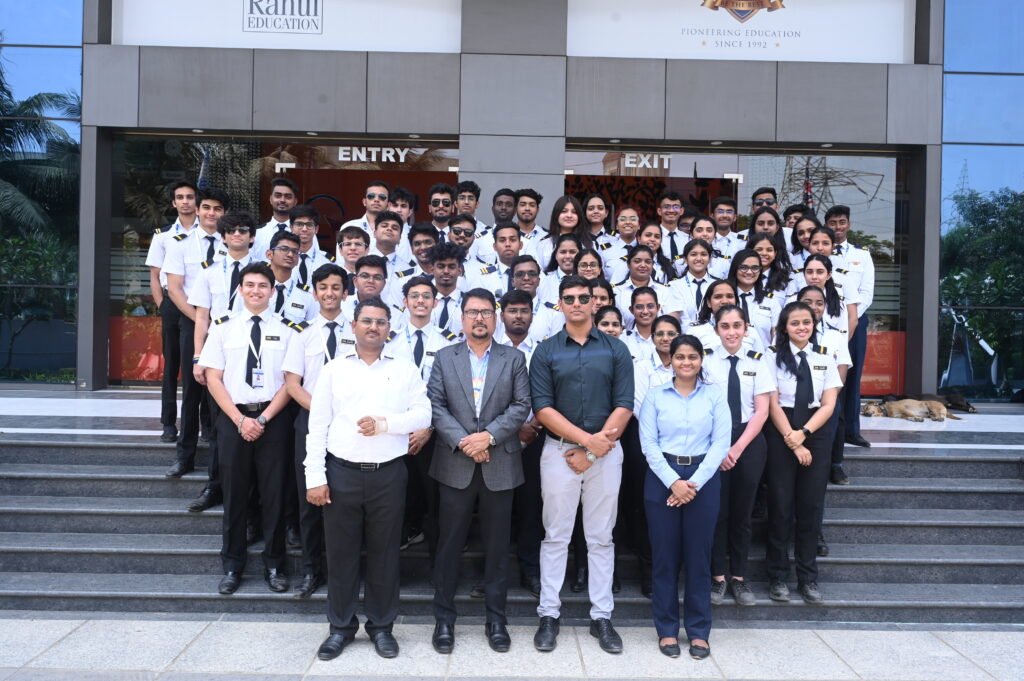Becoming a commercial pilot is a dream for many young Indians. The skies offer adventure, respect, and a rewarding career. However, to make this dream a reality, students must understand the details of commercial pilot training. That’s where Commercial Pilot Training Courses in India come in. These programs equip aspiring pilots with the skills and certifications needed to fly commercial aircraft safely and professionally.
What Are Commercial Pilot Training Courses?
India offers organized programs for training people to become certified commercial pilots, known as commercial pilot training courses. They consist of both theoretical research and hands-on flight instruction. Preparing pupils to manage a range of flying situations and conditions is the aim. These courses cover anything from completing emergency procedures to comprehending aviation technology.
Additionally, these programs place a strong emphasis on communication, navigation, and aviation laws. Students who successfully complete the training are granted a Commercial Pilot License (CPL), enabling them to pursue professional employment.
Why Are These Courses in High Demand?
The aviation industry in India is expanding quickly. The nation needs qualified pilots because of the emergence of low-cost carriers and increased aviation traffic. In India, more institutions are now providing commercial pilot training courses as a result of this demand.
This field is seen as a viable career option by many students. It provides opportunities for travel in addition to significant earning potential. Young people also favor flying because of its glamour and thrill.
Job stability is another important consideration. The need for qualified pilots persists even in times of global recession. This long-term potential makes pilot training a smart investment.
Eligibility for Commercial Pilot Training
Before enrolling in India’s commercial pilot training courses, candidates must fulfill several prerequisites. The candidate must first have finished their 10+2 coursework in mathematics and physics. Through open schooling, students with non-science backgrounds can nonetheless meet the requirements.
Medical fitness is just as important as intellectual credentials. A Class 1 medical examination administered by a trained aviation medical examiner is required of aspiring pilots. General health, hearing, and vision all play a part.
Additionally, applicants must be at least 17 years old when they apply. Because aircraft communication is done worldwide in English, a thorough grasp of the language is required.
Duration and Course Structure
The average duration of a commercial pilot training course in India is 18 to 24 months. The length of time is determined by the student’s speed and the weather, which has an impact on flying hours.
There are two primary sections to the course. The first is ground training, which consists of lectures on topics like aviation law, meteorology, and air navigation. The second is flying instruction, which teaches students how to operate both single- and multi-engine aircraft.
A minimum of 200 hours of flight training, including cross-country and solo flights, is required. Additionally, simulation sessions are essential for giving pupils experience and confidence.
Cost of Training and Financing Options
In India, commercial pilot training courses can be very expensive. Students may spend anywhere from ₹30 to ₹50 lakhs on average. Ground school, flight hours, and other associated costs like uniforms, study materials, and lodging are all included in this sum.
There are other financial choices, nevertheless. Bank education loans are widely available and frequently pay for a significant amount of the training cost. For deserving students, several institutions also provide scholarships or payment options.
It’s crucial to plan your funds before you begin. It guarantees a seamless educational experience and helps students and their families avoid unforeseen obligations.
Career Opportunities After Course Completion
A student can apply for a CPL from the Directorate General of Civil Aviation (DGCA) after completing Commercial Pilot Training Courses in India. Numerous aviation-related occupations can be accessed with this license.
The majority of graduates want to work as airline first officers. They can advance to captains after accumulating experience. CPL holders can work as cargo pilots, charter pilots, or flight instructors in addition to airlines.
Opportunities in the defense or government sectors are also available to some. Others might go toward more complex certificates, such as a Type Rating, to operate particular aircraft. For a skilled commercial pilot, the possibilities are truly endless.
Skill Development and Personality Growth
Being a pilot involves more than just flying. The development of fundamental skills is another goal of Indian commercial pilot training programs. These consist of stress management, discipline, leadership, and prompt decision-making.
Trainees learn how to behave appropriately and maintain composure under duress. These attributes help people in all aspects of life and are essential for every pilot.
Another crucial component is communication. Pilots must communicate with passengers, crew, and air traffic control. Efficiency and safety are guaranteed by effective communication.
Challenges Students May Face
There are drawbacks to commercial pilot training courses in India, notwithstanding their allure. Mentally and physically, the training is rigorous. Students are required to adhere to rigorous timetables and put in extended study sessions.
The length of the course may be prolonged by weather-related delays in flying sessions. Additionally, thorough preparation is necessary to pass the DGCA tests.
Another worry is financial strain. The expenses overwhelm a lot of students. These difficulties can be overcome, though, with the correct attitude and preparation.
Pilot training requires perseverance, dedication, and hard work. Those who maintain their focus typically succeed.
Tips for Aspiring Pilots
There are a few things you can do to get ready if you’re thinking about doing commercial pilot training courses in India. Start by honing your math and scientific abilities. The knowledge of aviation is based on these topics.
Read up on airplanes, flight procedures, and aviation regulations. Connect with professionals or current students by joining online forums. This sheds light on actual experiences.
Additionally, stay fit and healthy. Healthy habits should be adopted early on since a Class 1 medical certificate is necessary.
Lastly, maintain your motivation and exercise patience. Although the path may be difficult, the benefits outweigh the difficulties
Selecting Indian commercial pilot training courses is a daring and thrilling move that will lead to a rewarding profession. Students who complete these courses will gain the knowledge, abilities, and licenses necessary to work as professional pilots.
Even though the journey is challenging, countless chances come with it. Training is the first step on the path to managing airline operations and flying across continents.
Indian students can achieve their aims if they have a strong sense of discipline, a passion for aviation, and well-defined objectives. The possibilities are only limited by the correct direction and planning



